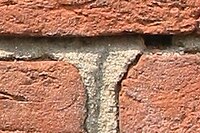
Photo from wikipedia
The activities of carved Quarry extraction generate problems of landscape pollution such is the case of solid waste discharged into open land dumps in central Mexico. This article presents the… Click to show full abstract
The activities of carved Quarry extraction generate problems of landscape pollution such is the case of solid waste discharged into open land dumps in central Mexico. This article presents the technological application of this solid waste in a new polymeric material with properties similar to those of a traditional mortar. It is concluded that the polymeric material uses low amounts of cement with respect to the traditional mortar, and it is elaborated with the recycled quarry as they are presented in its granulometry. The polymer used favored a low water/cement ratio (0.3) which did not allow to decrease resistance due to the fine nature of the materials (residues and cement) in addition to maintaining the workability of the material. The quarry residue was classified as silt with low plasticity and was characterized by X-ray diffraction and Fluorescence to identify 76% of SiO2, which is why it was used as a stone aggregate even though the fines content was approximately 93%. The maximum compression resistance obtained at 28 days were 8 Mpa with the polymer/solid ratios of 0.10, water/solids of 0.30, and quarry/solids of 0.67. Linear equations were analyzed for more representative values with R squared adjustment.
Journal Title: Advances in Materials Science and Engineering
Year Published: 2018
Link to full text (if available)
Share on Social Media: Sign Up to like & get
recommendations!